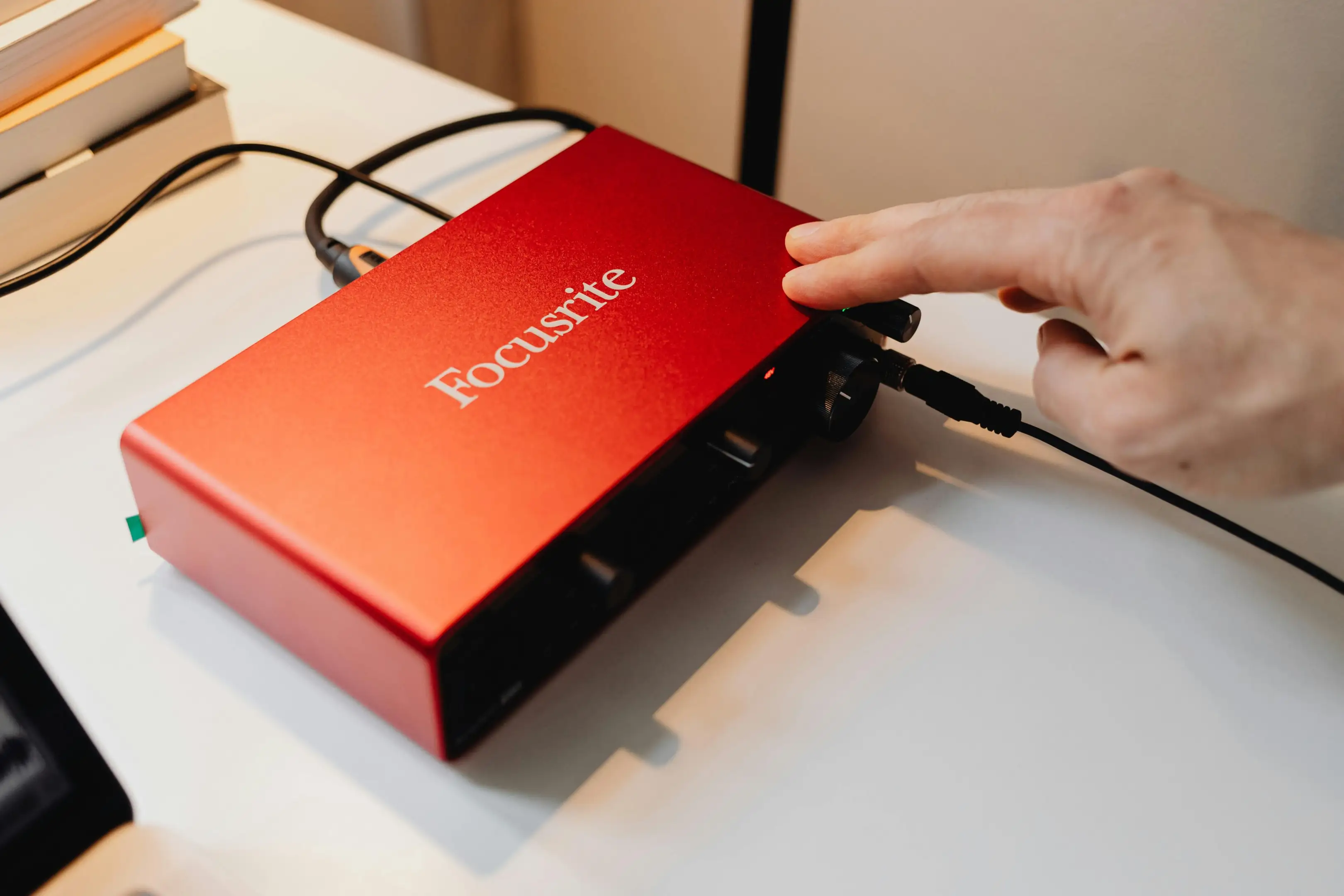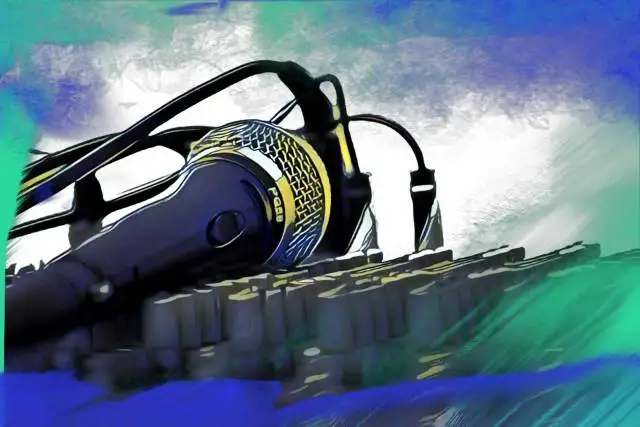Demo, short for demonstration, is a recording that serves as an early representation of a professional studio recording. Music demos help artists demonstrate the foundation of their ideas before having the song demo track finalized via additional production, re-recording, mixing, mastering, or any other number of processes.
If you're an artist, at some point you'll have a need to record demos in your digital audio workstation. Fortunately, we've put together a guide on what exactly a music demo recording entails and included some additional tips below so that you can pitch to record labels, work with collaborators, and create music more effectively. Let's take a look!
Understanding Music Demos
Music demos are the middle ground between your first idea of a song, and the final professional studio version of a track. These tracks can sometimes sound professional, but are often recorded before an artist comes in for studio time: you'll find that music demos often have limited instrumentation, auditory details, or feature a scratch track on the beat or vocals as a placeholder for a recording session at a later date.
These are not final, polished recordings. Music demos serve as a roadmap towards your idealized version of a song. It's one step closer to crafting that finished master recording.
What is the Purpose of a Music Demo?
A good demo showcases what an artist has in mind in terms of direction of the track before they have access to studio musicians, engineers, or other creative professionals that may have the ability to take the song to the next level. A music demo is needed throughout the recording process to serve as a reference point, since so much of art is subjective: demos provide a tangible starting point for a piece of music that can help ideas turn into finished songs throughout the creative process.
Popular Demo Recording Examples
Perhaps the best way to illustrate the role of the demo is to listen to some popular demo examples versus the final song!
Red Wine Supernova by Chappell Roan
Here we can hear minimal instrumentation and the basic musical direction of Red Wine Supernova by Chappell Roan:
Versus the final studio recording:
Lady Gaga
Lady Gaga has an extensive discography, so she has her fair version of demos over the course of here songwriting career. You can hear direct contrast between her demo recordings and final masters in this compilation:
Madonna
Listen to the difference between the demo and final versions' of some of Madonna's most iconic tracks:
How Do I Record Demos of My Music?
Not sure how you should go about making demos? Here are three simple steps for crafting a demo to get you to the next stage of the recording process:
1. Build or Source a Beat
For your demo, you'll need some sort of instrumentation whether that's a produced beat or a backing track of piano or acoustic guitar. Your demo beat should include any chord changes and the entirety of your song's chord progression, at the very least - it should serve as a skeleton for the structure of your song.
2. Record Your Demo
Using whatever microphone you have available, record to your demo beat or backing track in your digital audio workspace. To do this, you'll need an audio recording interface and a basic workstation like GarageBand, Ableton Live, or other similar software.
3. Fine Tune and Label Your Recordings
Before sending out your demo, make sure you fine tune your work to get it as close to the final version as possible. The more work you do upfront, the less money or time you'll have to spend tweaking it with future collaborators.
For a more in-depth walkthrough on crafting a great demo studio and recording, check out this video by music creator Frightbox Recording:
Who Should I Send My Music Demos To?
You should send your music demos to anyone who creates music with you, or provides helpful feedback throughout the recording process. This could be other artists and collaborators, or mixing and mastering engineers that need your demo version as a reference.
While less common today, some music labels also accept demo recordings as proverbial pitches for signing artist to their roster. Some labels do not accept unsolicited demos, however, so don't bank on getting a response from any particular label after you send a demo. Nowadays, it typically takes a bit more leverage than a demo on its own to earn a solid recording contract.

What Should I Send With My Demo Recordings?
In most cases as an independent artist, you'll be sending off your demo recordings to potential collaborators like songwriters, other musicians, producers, or studio engineers. In this case, you'll want to share the following with your demo:
- Mix Notes: Leave as detailed notes as possible, with what you envision for the complete song idea. Specific timestamps can be helpful for getting your point across appropriately.
- Reference Track: Compile a playlist of reference tracks that can serve as your north star for your studio demo.
- Critical Track Information: Include information like BPM, key, etc. to make it easy on your collaborators. It may seem like a small detail, but labeling your files properly makes you significantly easier to work with.
- Stems or Multitracks: Depending on the nature of your collaboration, an engineer may ask you for stems or multitrack of your demo recording. Not sure the difference? Check out our article on stems vs. multitracks .
Music Demos FAQ
Before sending out your music demos to collaborators, engineers, and labels, use these commonly asked questions and answers to help you understand the ins and outs behind recording demos:
What is a demo to a song?
A song demo can be thought of as a sample version of a recording. Sending demos to collaborators and potentially labels is common to give other parties an idea of where you're headed sonically throughout the recording process.
What is the difference between a demo and a full song?
A demo might have minimal instrumentation, rough vocals, or certain characteristics that need to be polished before finishing the final product. A full song master is radio-ready, mixed, and mastered to perfection for mass consumption.
How many songs make a demo?
To make a demo album, you'd typically need at least 7 tracks, if not more. A smaller group of tracks is usually referred to as an extended play or "EP" for short.
What does demo mean in a song title?
"Demo" is short for demonstration, or demonstration recordings. A music demo is used in the music industry to pitch to a record label or serve as a musical reference amongst artistic collaborators.
How long should a music demo be?
Your music demo should be the entire duration of your proposed song, in most cases. You can think of a demo album or demo recordings as sample versions of the final product.
How do you make a music demo?
Making a music demo is just a matter of crafting a song out of your digital audio workstation. You can use instruments, a basic microphone, and an audio interface to get your song recorded for instance.
Creating some rough demos is essential part of the songwriting process. Sharing demos can help you get one step closer to your master recordings or officially released music and they can easily be created in a basic home recording studio. Have fun using this guide to create your next demo tape!





